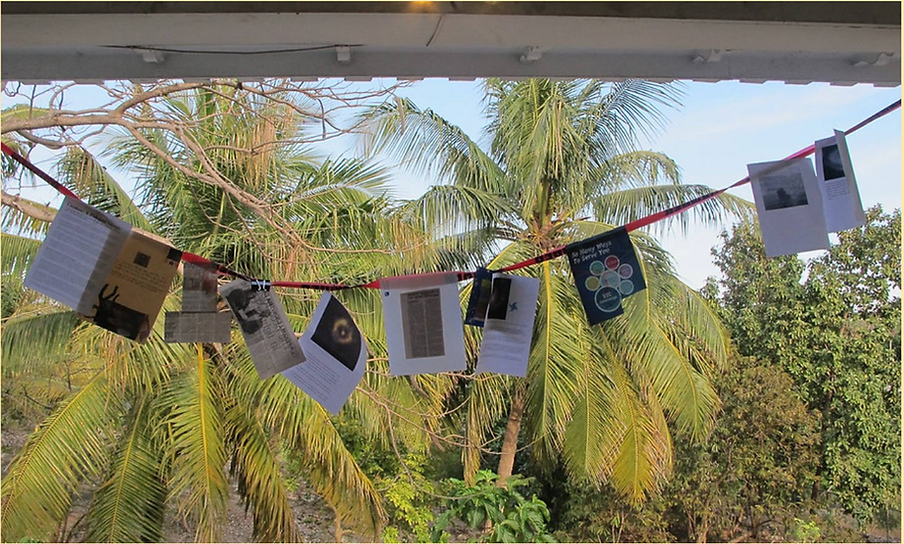
Ice-Breakers
Playful exercises designed to relax inhibitions break the ice and get us used to making silly mistakes. Inspired by Augusto Boal’s Games for Actors and Non-Actors, warm-ups generate a safe space of trust and cooperation.

1. Read the text aloud while participants make something
A volunteer reads a target text aloud (something difficult or “boring” to demonstrate that art-making promotes ownership) while other participants create book covers for the text. The combined listening and book-making takes advantage of two Latin American practices: the “lectores” who read newspapers, Shakespeare, Marx, etc. in tobacco factories https://rarehistoricalphotos.com/factory-lectors-1910/ and the more recent Cartonera publishers who recycle used cardboard into books, https://www.construirtv.com/que-son-las-editoriales-cartoneras//Cartonera

2. Everyone asks the text a question and publishes it on the clothesline
Each participant asks the text a question. This is the core of critical thinking. Texts are the objects of scrutiny, not students. They are interrogators who discover that curiosity, rather than knowing things, is fun and sustains learning. The inevitable variety of questions demonstrates that reading is normally interpretive and that differences are contributions -not obstacles – to understanding. With origins in the Iberian Peninsula“publishing” questions on a clothesline, clothespins and all — employs low-cost “literatura de cordel,” a practice by creatives where professional publishing is unaffordable. https://library.brown.edu/create/brasiliana/cordel/
3. Make art from the text
After the first session, when the Pre-Texts protocol is established, participants take turns in the following sessions to facilitate an arts activity based on the target text. The activity can be irreverent: jokes, fashion shows, riddles, comics, recipes, etc. but attentive to the text. Facilitators propose a genre of art or an approach and then they invite everyone to ask questions and make recommendations in order to co-construct the activity. This is an opportunity to recover local arts, languages, and cultural practices, to decolonize education even when using texts from colonial centers.
•Dramatization of “The Beggar by Chekhov by 8th graders in the Kalmadi School, Pune, India

4. Form a circle and ask “What did we do?”
Art-making closes with a brief session to reflect on “What did we do?” Rather than ask the conventional “What did we learn?” — which generates rote, mute, and even hostile responses — our question animates participation. A reflection in one or two sentences, to add interpretation and theory to art-making. Everyone speaks before anyone can speak again. This develops good citizenship.

5. Go off on a tangent
“Go off on a tangent” is a prompt that repeats from one session to the next. Rather than dissuade participants from exploring even far-fetched connections to a shared text — as conventional teachers tend to do — we encourage free and broad reading to select a contribution to post. Posting the variety of “tangents” anonymously and sampling them as a first activity of the following session, iterates and anticipates the intellectual and the social value of curiosity and personal differences.
Amoeba Tour
The “Amoeba Tour” is a gallery visit in which each participant is a guide to an object of their choice. After circulating for a short while, each person adopts an object and says what connection it has to the text we have just read and interrogated. It’s that simple with profound results. In the process, we:
1. read attentively
2. practice critical thinking
3. interpret
4 .listen to each other
5. develop adaptive leadership.
The Amoeba Tour is one of many possible ways that the Pre-Texts protocol can engage the arts to improve reading comprehension and a love of learning among children, youth, and adults.